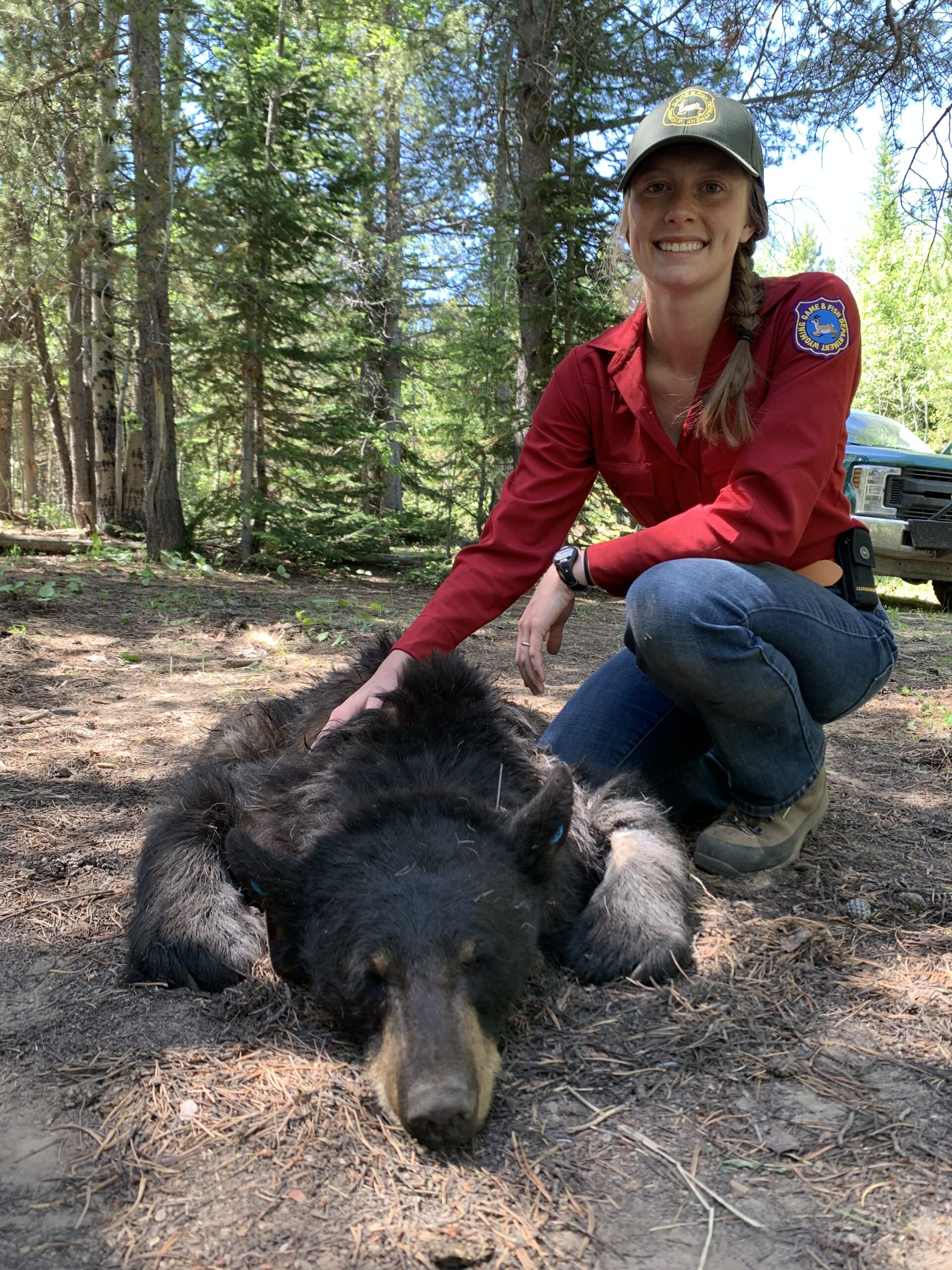Student Highlights: Emily Davis
— MEET EMILY —
Class: Graduate
Major: Zoology & Physiology
My name is Emily Davis. As a child growing up in North Carolina, I was very interested in wildlife species and the landscapes they lived in. In middle school my interests were solidified by taking a career quiz that informed me I should be a zoologist. Jumping ahead, my interests and love for wildlife, specifically large carnivores, never ceased and I attended the University of Wyoming for my bachelor’s degree in Zoology.
During my time as an undergraduate at UW, I was a research technician for the UWYO Raccoon Project where I completed undergraduate research on raccoon space use in Laramie, WY. This led me to work for a variety of other projects across Wyoming, including a spotted skunk project and another focusing on chronic wasting disease (CWD). I was then fortunate enough to meet my current advisor Joe Holbrook, as well as collaborators Dan Bjornlie and Ryan Kindermann, to begin research on black bear behavior in Wyoming. My research on black bears has made my childhood dreams come true and has even increased my interest in learning more about large carnivores and the landscapes they inhabit.
— EMILY’S RESEARCH —
My research aims to understand black bear behavior, specifically by assessing their space use and habitat selection. We collared bears across four different study areas in Wyoming, which will help us evaluate how black bears select resources across the state. Black bears exhibit individual variation in behavior due to age, sex, and body condition which in turn impacts their habitat decisions. Understanding how black bears individually and as a population select for different habitat types can help us better manage and conserve landscapes important to specific populations of bears.
Emily holding one of the three bear cubs pulled from the den while the mother’s VHF collar is replaced with a GPS collar
Black bears are a cherished North American hunting species. Thus, an additional goal of our work is to assess how black bears balance risk and reward around hunter-placed bait sites. Bait sites are allowed in Wyoming during hunting season to attract bears to a specific location to ease hunter selection and harvest. Anecdotal evidence suggests large males may be learning to avoid baits during hunting hours, thereby avoiding the risk of mortality while exploiting the reward of food from baits. Linking our findings from black bear habitat selection analyses and bait site use will help us understand how exactly black bears navigate the landscape and make context-dependent decisions.
Our work is also exceptional at collaborating with stakeholders and wildlife managers. Ultimately, collaborations dedicated to black bear research and management improve our knowledge of black bear behavior in Wyoming. Historically, grizzly bears have been (and still are) the dominate focus of bear research in Wyoming and the inter-mountain west. Lastly, combining our knowledge of black bear ecology from GPS collar-recorded movements with new technologies like landscape imagery derived from Landsat and MODIS, we will help inform black bear management and conservation policies across the west which is a less traditional area of black bear research.
ABOUT STUDENT HIGHLIGHTS
Every year, we award fellowships to graduate and undergraduate students attending the University of Wyoming or one of Wyoming’s community colleges in order to provide them with the opportunity to do “real” research. Occasionally, we feature one of these students and their research on this blog. For more information about our student fellowships, visit our College Programs page.



